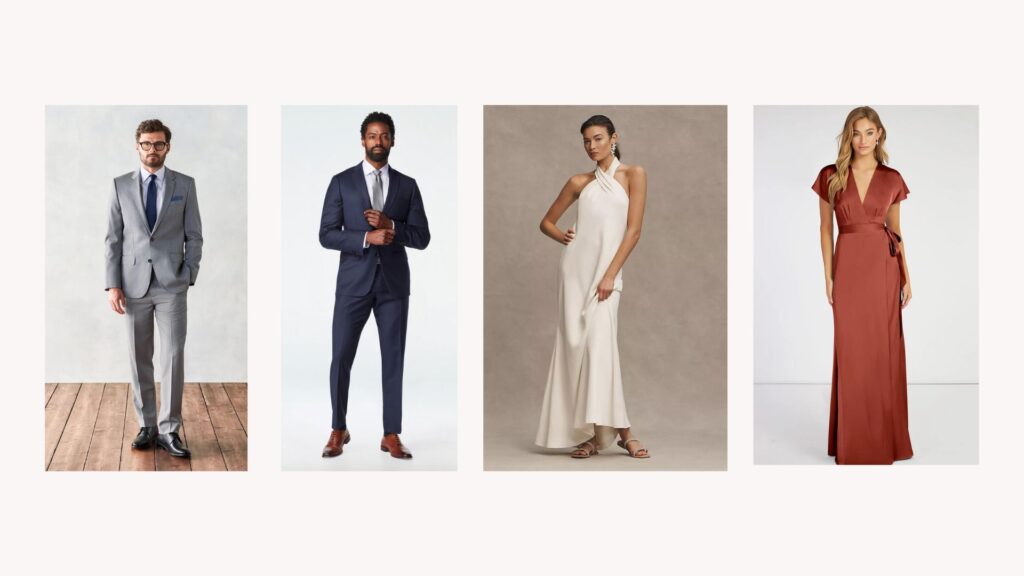What is Avant-Garde Fashion?
Definition and Origin
Avant-garde fashion is more than just a style—it’s a statement, an art form, and a rebellion against the norm. The term “avant-garde” originates from the French military term meaning “advance guard,” signifying innovation and leadership. In fashion, this translates to designs that challenge conventional aesthetics and push boundaries.
Emerging in the early 20th century, avant-garde fashion became synonymous with breaking the rules of tradition. It thrives on bold experimentation, often embracing unconventional materials, asymmetric cuts, and striking color palettes. This genre isn’t confined to clothing; it’s a movement that transforms how people perceive and experience fashion.
Core Principles of Avant-Garde Design
At its core, avant-garde fashion is built on principles of innovation, individuality, and artistic expression. Designers prioritize creativity over functionality, producing garments that often border on sculpture or performance art. Each piece tells a story, questions societal norms, or introduces an abstract idea.
The Philosophy Behind Avant-Garde Fashion
Challenging Traditional Norms
Avant-garde fashion thrives on the idea of questioning and rejecting traditional norms. It’s a rebellion against fast fashion, consumerism, and the repetitive cycle of trends. These designs are meant to provoke thought, challenge perceptions, and inspire dialogue.
The Intersection of Art and Fashion
Many avant-garde designers view their work as wearable art. The collaboration of mediums—such as painting, sculpture, and architecture—with fashion gives rise to unique creations that go beyond functionality. For instance, collections by designers like Hussein Chalayan or Iris van Herpen are often described as walking exhibitions.
The Evolution of Avant-Garde Fashion
Historical Roots
Early Pioneers in Avant-Garde Fashion
The seeds of avant-garde fashion were planted by visionaries such as Elsa Schiaparelli in the 1930s, who infused her designs with surrealist elements, and the Futurists, who prioritized movement and innovation in their clothing. Their bold ideas set the stage for a revolution in fashion.
Influences from 20th-Century Art Movements
Movements like Cubism, Surrealism, and Dada significantly influenced avant-garde fashion. Designers drew inspiration from abstract art, asymmetry, and unconventional forms, blending artistic elements into garments to create pieces that felt alive and provocative.
Avant-Garde in the 21st Century
Modern Designers Who Redefine Boundaries
Today, avant-garde fashion is championed by designers such as Yohji Yamamoto and Rei Kawakubo. Their work challenges the norms of beauty and explores themes of deconstruction, imperfection, and conceptualism.
The Role of Technology in Avant-Garde Fashion
Technology has expanded the possibilities of avant-garde design. From 3D printing to wearable tech, designers like Iris van Herpen use cutting-edge methods to create intricate, futuristic designs. This blend of art and technology allows for limitless creativity.
Characteristics of Avant-Garde Fashion
Experimental Materials and Textures
Avant-garde fashion is renowned for its use of unconventional materials. Designers experiment with plastics, metals, and recycled components, blending these with traditional fabrics to create unique textures and aesthetics.
Unique Silhouettes and Structures
One of the defining features of avant-garde fashion is its use of dramatic and unconventional silhouettes. From oversized, voluminous garments to architectural, structured pieces, the focus is on creating a striking visual impact.
Bold Colors and Patterns
Though often associated with monochrome palettes, avant-garde fashion also embraces bold, experimental patterns and colors that defy tradition, creating a dynamic and eye-catching look.
Influential Avant-Garde Designers
Iconic Figures in the Avant-Garde World
Yohji Yamamoto
Yohji Yamamoto is a name that resonates deeply within the avant-garde fashion world. Known for his masterful use of black, asymmetry, and unconventional silhouettes, Yamamoto redefines elegance with a rebellious twist. His designs blend Japanese aesthetics with Western fashion, often focusing on deconstruction and layered forms that evoke a sense of mystery and sophistication.
Yamamoto’s collaborations with brands like Adidas for the Y-3 line showcase his ability to merge avant-garde concepts with functional, everyday wear, making his influence far-reaching and timeless.
Rei Kawakubo
Rei Kawakubo, the genius behind the brand Comme des Garçons, is a trailblazer who consistently defies expectations. Her work often challenges the concept of beauty and perfection, embracing themes of imperfection and asymmetry. From exaggerated forms to unconventional cuts, her collections are more akin to art installations than traditional fashion shows.
Kawakubo’s influence extends beyond the runway, inspiring designers and fashion enthusiasts to embrace creativity without boundaries.
Alexander McQueen
Alexander McQueen is celebrated for his theatrical approach to avant-garde fashion. His collections often featured dramatic storytelling, with garments that explored themes of nature, history, and human emotion. McQueen’s genius lay in his ability to marry technical precision with boundless creativity, producing garments that felt both otherworldly and deeply human.
Emerging Designers
Visionaries Shaping the Future of Avant-Garde
Emerging talents like Iris van Herpen and Craig Green are pushing avant-garde fashion into uncharted territory. Van Herpen is renowned for her use of 3D printing and innovative materials, crafting garments that blur the line between technology and couture. Craig Green, on the other hand, explores themes of identity and vulnerability, with designs that feel raw, poetic, and deeply personal.
These visionaries continue to expand the possibilities of avant-garde fashion, ensuring its relevance in the modern age.
Avant-Garde in Pop Culture
Celebrities and Avant-Garde Fashion
Celebrities play a significant role in bringing avant-garde fashion into the mainstream. Icons like Lady Gaga, Björk, and Zendaya have donned avant-garde designs that turn heads and spark conversation. These bold fashion choices not only showcase the creativity of designers but also inspire fans to embrace experimental styles.
Iconic Avant-Garde Moments on the Red Carpet
From Björk’s infamous swan dress at the Oscars to Lady Gaga’s meat dress, avant-garde fashion has created some of the most memorable moments in pop culture. These outfits serve as a reminder of the power of fashion to provoke thought and evoke emotion.
The Influence of Avant-Garde Fashion in Daily Wear
Translating Avant-Garde into Everyday Style
While avant-garde fashion is often viewed as impractical for daily wear, its influence can be seen in contemporary clothing. Elements like oversized silhouettes, deconstructed pieces, and asymmetrical cuts are now common in streetwear and casual fashion. This evolution allows avant-garde concepts to reach a broader audience without losing their artistic essence.
The Rise of Avant-Garde Streetwear
Avant-garde streetwear bridges the gap between high fashion and urban style. Brands like Rick Owens and Off-White incorporate avant-garde elements into wearable designs, making experimental fashion more accessible to the masses.
Challenges in Avant-Garde Fashion
Commercial Viability
One of the biggest challenges for avant-garde fashion is its limited commercial appeal. While these designs are celebrated in art and fashion circles, their high production costs and niche audience can make them financially unsustainable.
The Thin Line Between Art and Wearability
Avant-garde fashion often struggles to balance artistic expression with practicality. While the goal is to challenge norms and inspire creativity, the lack of functionality can alienate potential consumers.
Future of Avant-Garde Fashion
Sustainability and Ethical Practices
As the fashion industry faces growing scrutiny over its environmental impact, avant-garde designers are exploring sustainable practices. From using recycled materials to adopting ethical production methods, the future of avant-garde fashion lies in its ability to innovate responsibly.
Integration with Digital and AI Technology
The integration of AI and digital technology is opening new doors for avant-garde fashion. Virtual fashion shows, AI-designed garments, and augmented reality are transforming how designers create and present their work. This fusion of technology and fashion ensures that avant-garde remains at the forefront of innovation.
Conclusion
Avant-garde fashion is not just about clothing; it’s about pushing boundaries, challenging perceptions, and inspiring creativity. From its historical roots to its modern evolution, this genre continues to influence how we view and experience fashion. As technology and sustainability become integral to its development, avant-garde fashion promises to remain a powerful force in the industry.
FAQs
- What defines avant-garde fashion?
Avant-garde fashion is defined by its focus on innovation, creativity, and breaking traditional norms. It often features unconventional materials, unique silhouettes, and artistic concepts. - How do avant-garde designers use art as inspiration?
Designers draw from various art forms like painting, sculpture, and architecture, infusing these elements into their garments to create wearable art. - Who are some of the most influential avant-garde designers?
Visionaries like Yohji Yamamoto, Rei Kawakubo, and Alexander McQueen have left an indelible mark on avant-garde fashion. - Can avant-garde fashion be practical?
While primarily artistic, avant-garde fashion influences daily wear through elements like deconstructed cuts and bold silhouettes, making it more accessible. - How does technology influence avant-garde fashion?
Technology plays a crucial role by enabling innovations like 3D printing, wearable tech, and virtual fashion shows, pushing the boundaries of what’s possible.



